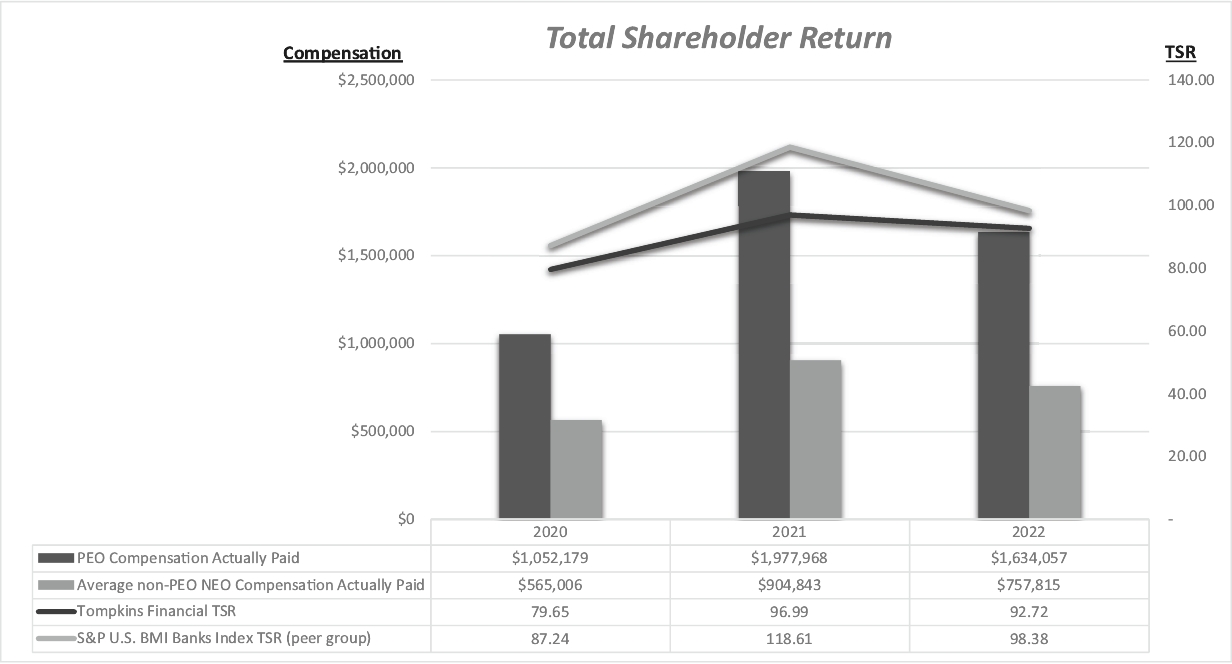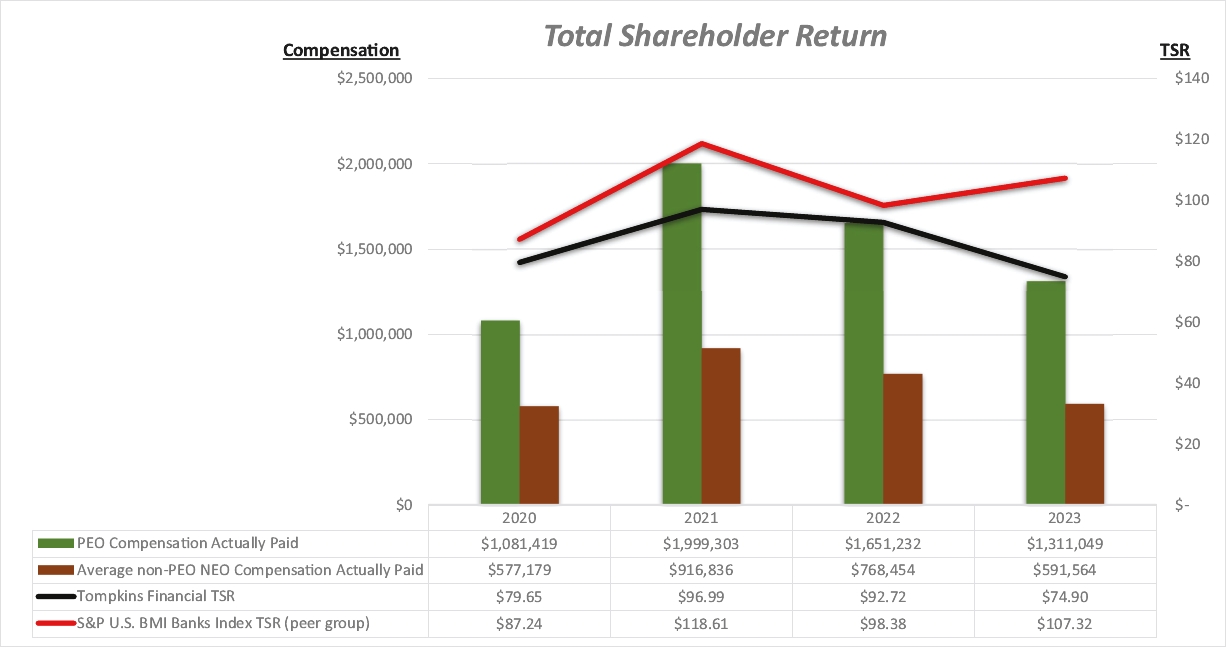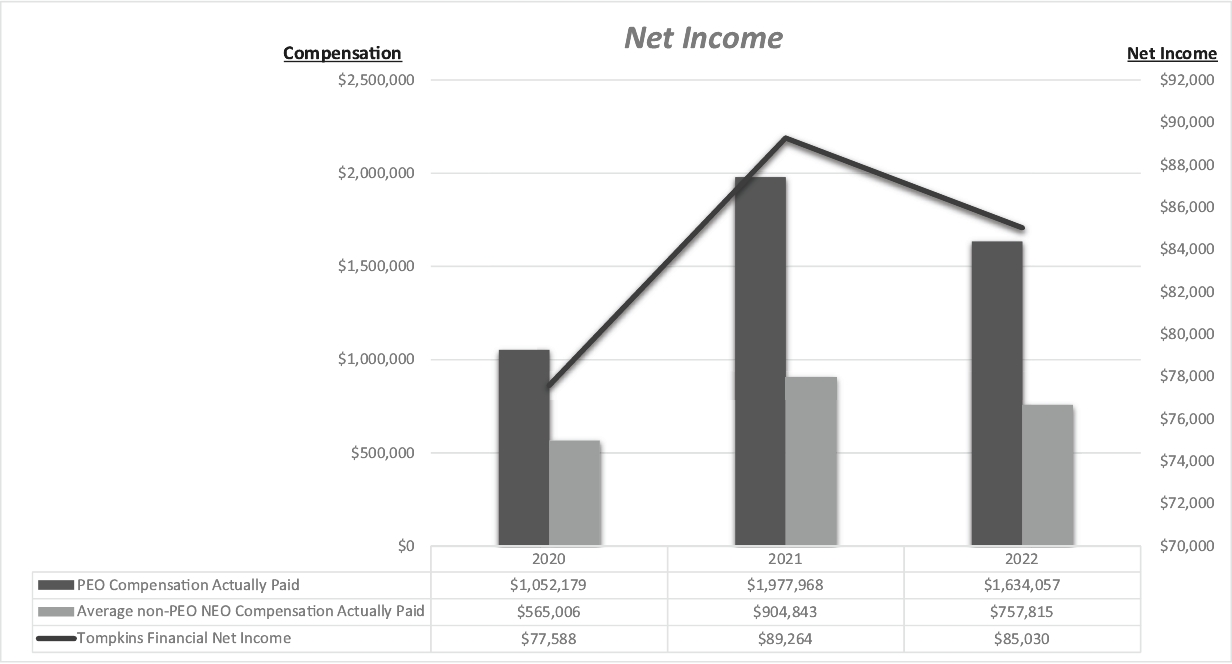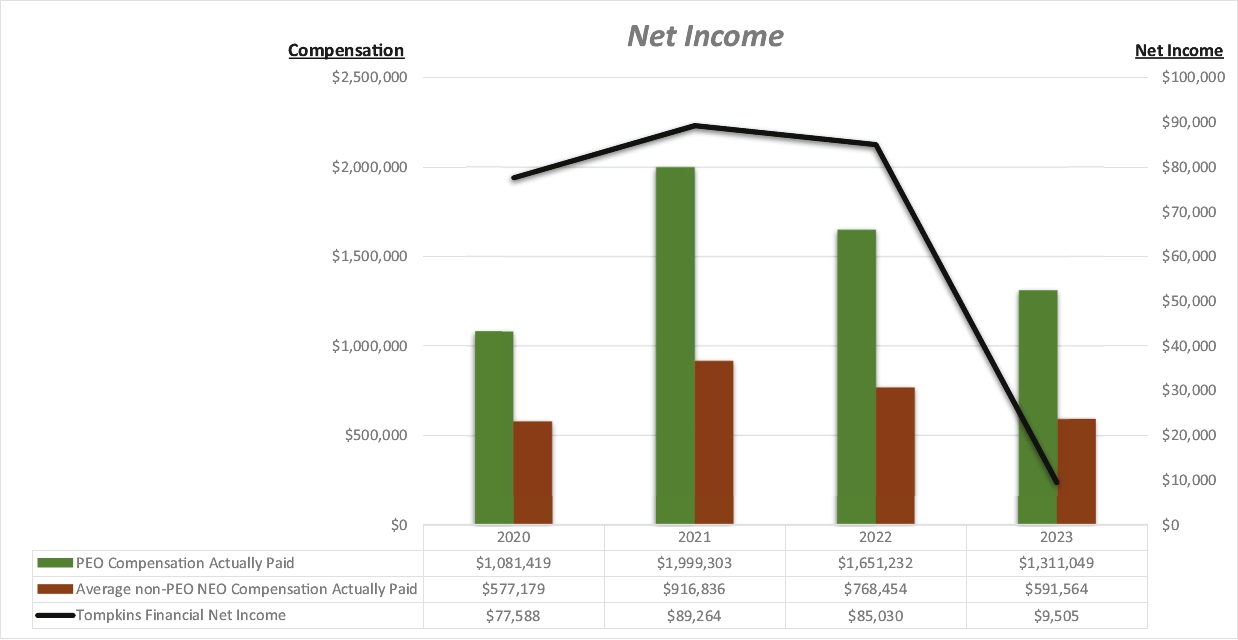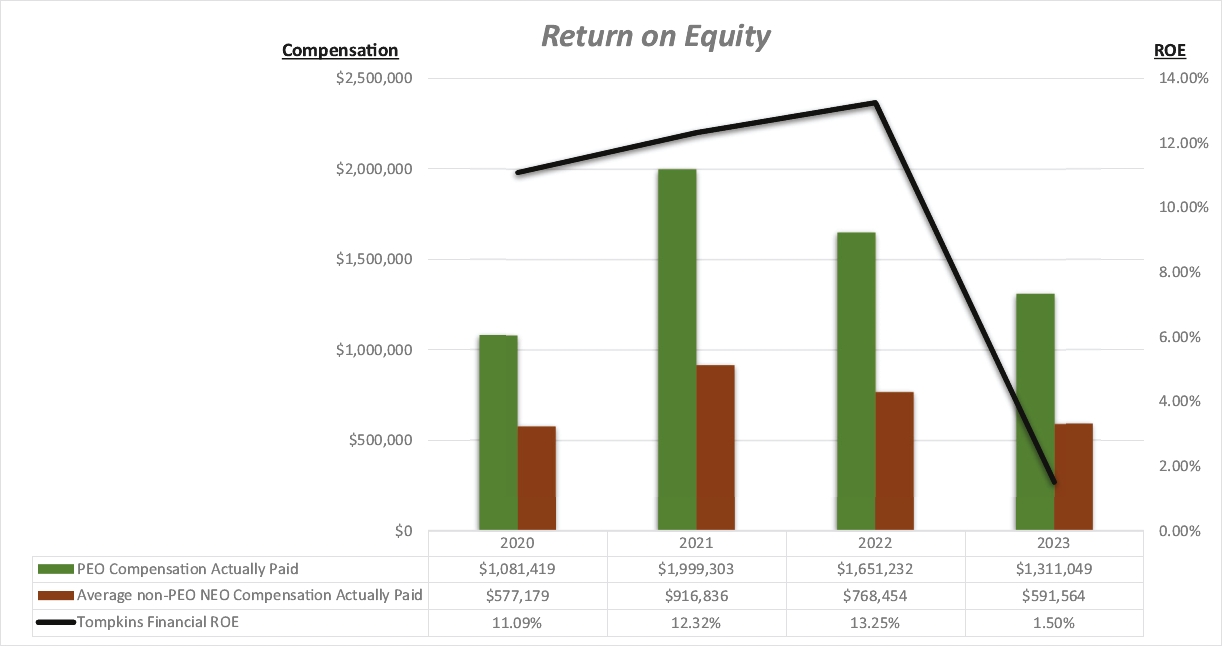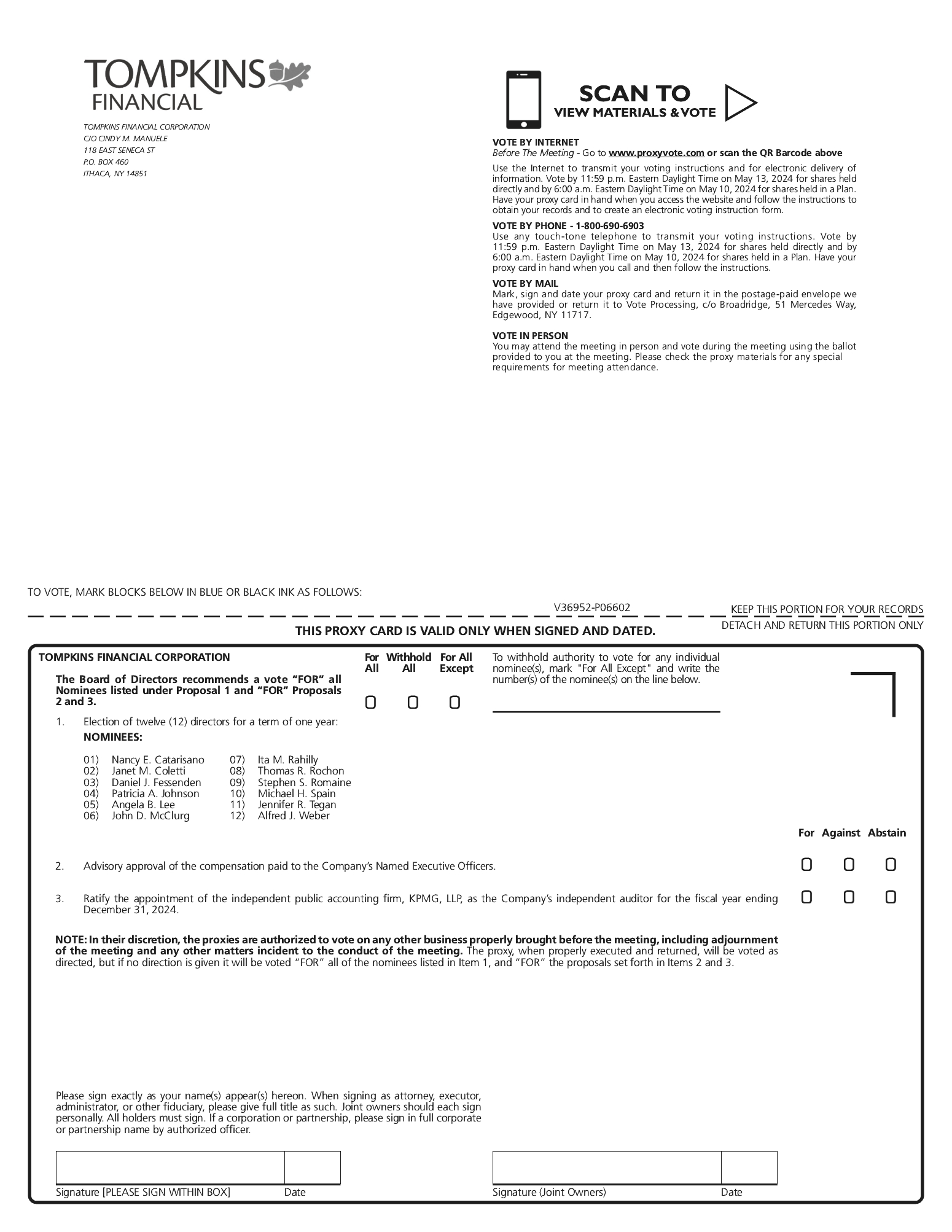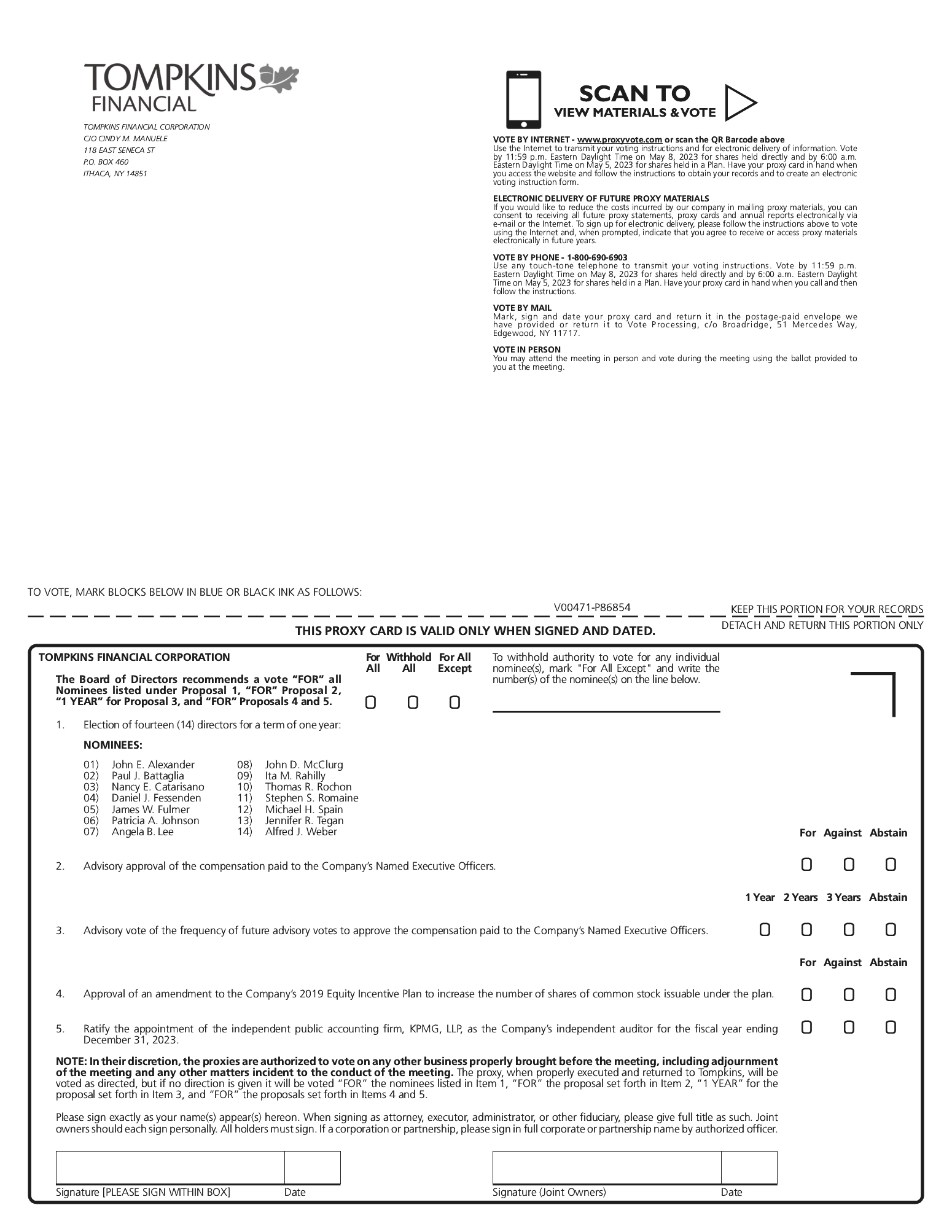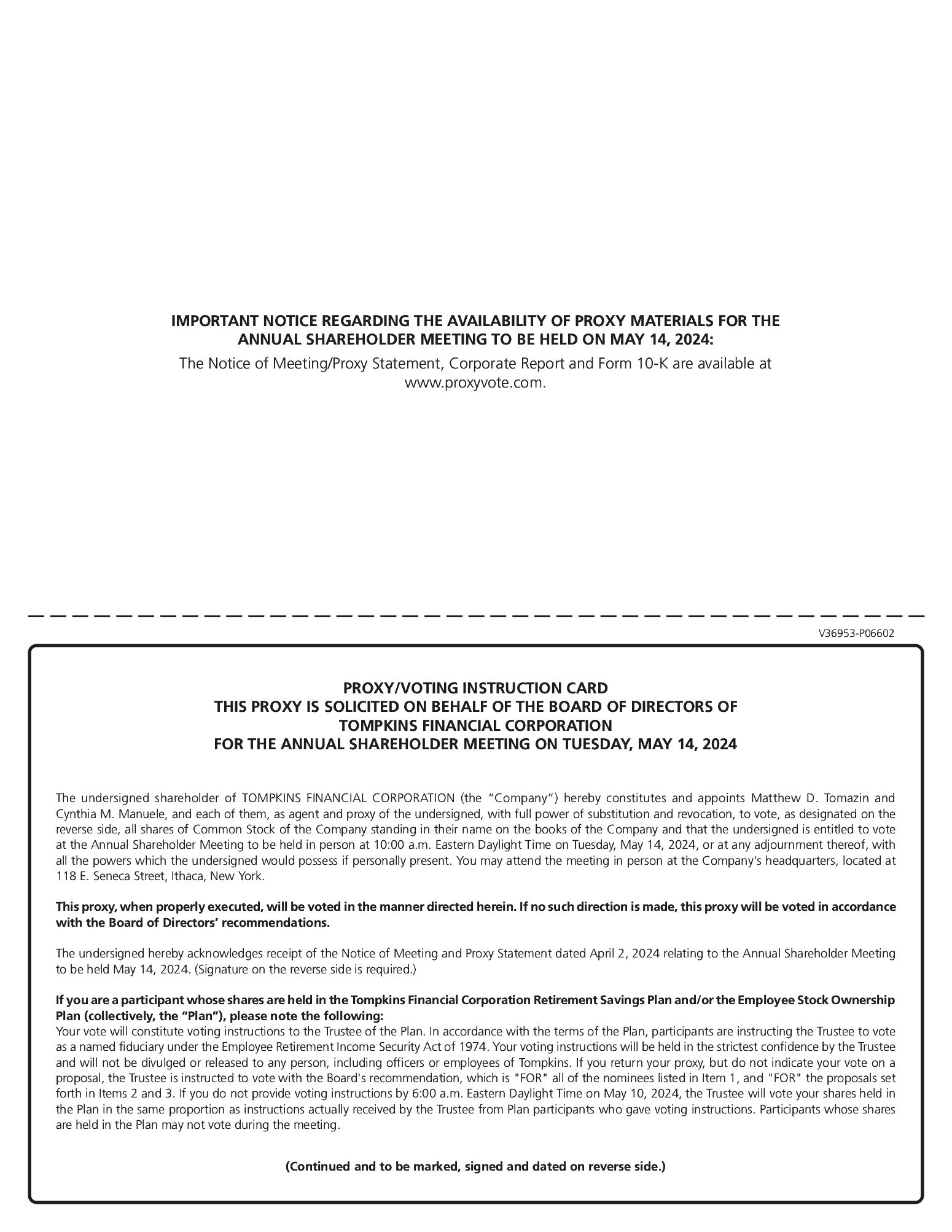This column also includes above-market interest on nonqualified deferred compensation paid in 20222023 as follows: Mr. Fetsko: $ 4,059;$12,646; Mr. McKenna: $ 353;$1,189; Mr. Boyce: $ 4,739;$14,654; and Mr. Hartz: $3,064.Ms. Kunkel: $1,374.
(5)
| The amount in this column includes: employer matching contributions pursuant to the 401(k) Plan and amounts paid pursuant to profit sharing and supplemental profit sharing as explained in the “Qualified Savings Plans“Retirement and Profit Sharing”Other Benefits” section on page 3225; a contribution to the DC SERP (defined below), for Messrs. McKenna and Hartz;Mr. McKenna; the dollar value of the applicable life insurance premiums paid on the Named Executive Officers’ behalf by the Company; perquisites and other personal benefits or property; dividends earned on restricted shares at time of vesting; and interest income on non-qualified deferred compensation. |
For Mr. Romaine, the amounts were as follows: Company profit sharing contributions to the ESOP, $10,675; Company cash profit sharing, $10,675;$6,600; supplemental profit sharing $33,729;$9,871; Company match on salary deferral to the 401(k) Plan, $12,200;$13,200; dollar value of life insurance premiums, $7,736;$8,751; personal use of Company-owned vehicle, $254.$444; dividends, $35,110.
For Mr. Tomazin, the amounts were as follows: Company cash profit sharing, $5,205; Company match on salary deferral to the 401(k) Plan, $10,410; Company contributions to the 401(k) plan, $10,410; dollar value of life insurance premiums, $420; personal use of Company-owned vehicle, $12,823; dividends, $1,519.
For Mr. Fetsko, the amounts were as follows: Company profit sharing contributions to the ESOP, $10,675; Company cash profit sharing, $10,675;$6,600; supplemental profit sharing, $10,924;$2,121; Company match on salary deferral to the 401(k) Plan, $12,200;$13,200; dollar value of life insurance premiums, $6,676;$5,713; personal use of Company-owned vehicle, $3,744.$3,616; partial reimbursement of club membership dues, $2,754, dividends, $8,337; health insurance stipend, $3,732.
For Mr. McKenna, the amounts were as follows: Company profit sharing contributions to the ESOP, $10,675; Company cash profit sharing, $10,675;$6,600; supplemental profit sharing, $7,459;$2,874; Company match on salary deferral to the 401(k) plan, $12,200;$13,200; Company contributions to the 401(k) Plan, $17,625; Defined Contribution SERP Plan, $5,250;$27,225; dollar value of life insurance premiums, $3,909;$4,641; personal use of Company-owned vehicle, $4,595.$2,708; partial reimbursement of club membership dues, 24,627; dividends, $8,309.
For Mr. Boyce, the amounts were as follows: Company profit sharing contributions to the ESOP, $10,675; Company cash profit sharing, $10,675;$6,600; supplemental profit sharing, $4,418;$1,080; Company match on salary deferral to the 401(k) Plan, $11,937;$12,630; dollar value of life insurance premiums, $6,041;$5,380; personal use of Company-owned vehicle, $1,768.$1,768; dividends, $8,309.
For Mr. HartzMs. Kunkel, the amounts were as follows: Company profit sharing contributions to the ESOP, $10,675; Company cash profit sharing, $10,675; supplemental profit sharing, $3,417;$6,320; Company match on salary deferral to the 401(k) Plan, $12,200;$12,640; Company contributions to the 401(k) Plan, $17,625;$14,220; Defined Contribution SERP Plan, $13,485;$51,408; personal use of Company-owned vehicle, $3,948.$2,759; partial reimbursement of club membership dues, $15,857.
Long-Term Equity-Based Awards and Stock Grants
The Company maintains the 2019 Equity Incentive Plan as a vehicle to encourage the continued employment of key employees of the Company and its subsidiaries, and to align their interests with those of the Company’s shareholders by facilitating the employees’ ownership of a stock interest in Tompkins Financial Corporation. The Committee believes that an equity plan is in the best interests of the Company and its shareholders since it enhances the Company’s ability to continue to attract and retain qualified officers and other key employees. The Committee’s practice has been to grant awards to Named Executive Officers on an annual basis.
In November 2022,2023, each of the Named Executive Officers received an award of restricted stock units with performance-based vesting, as described above under “Compensation Discussion and Analysis– Components of Compensation – Long-Term Equity-Based Awards.” Also in November 2022,2023, each of the Named Executive Officers received an additional award of restricted stock with a 5-yearfive-year vesting schedule. This schedule provides for zero percent vesting in year one and 25% vesting in years two through five.
Mr. Fetsko received an additional performance-based restricted stock award that has a time-based vesting component, with 100% vesting on the fourth anniversary of the grant date (provided that the performance goals specified in his award have been met).



